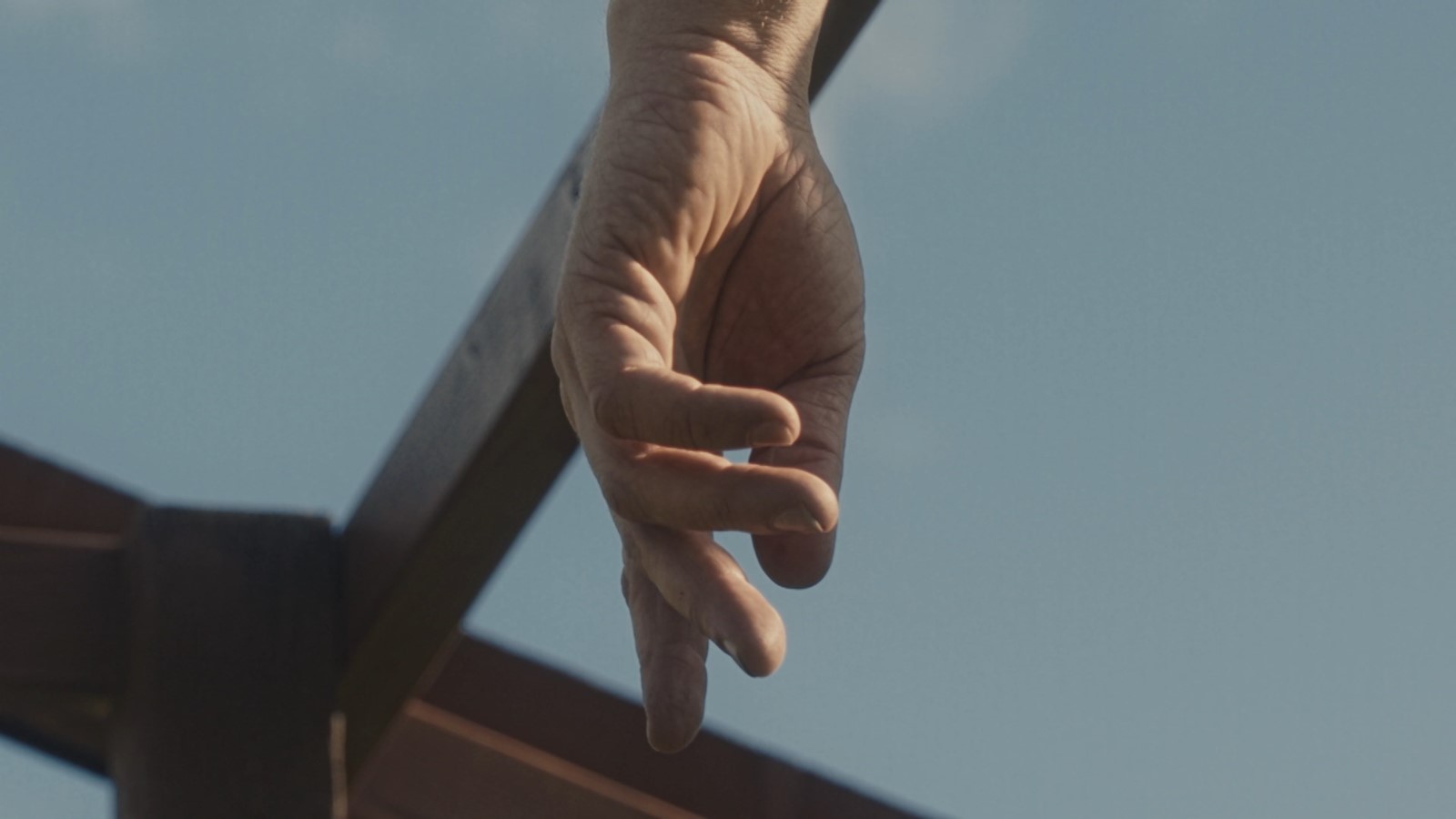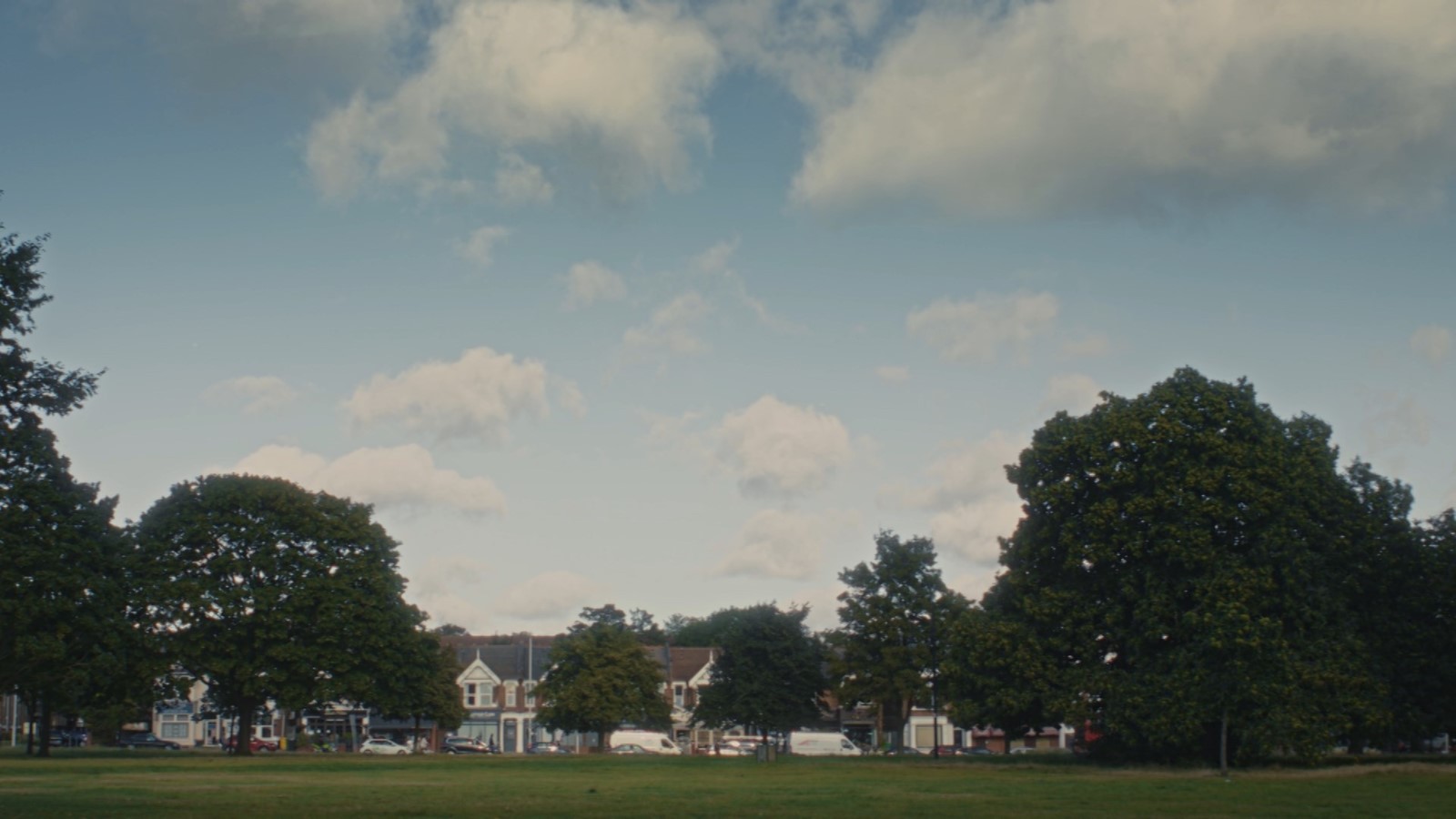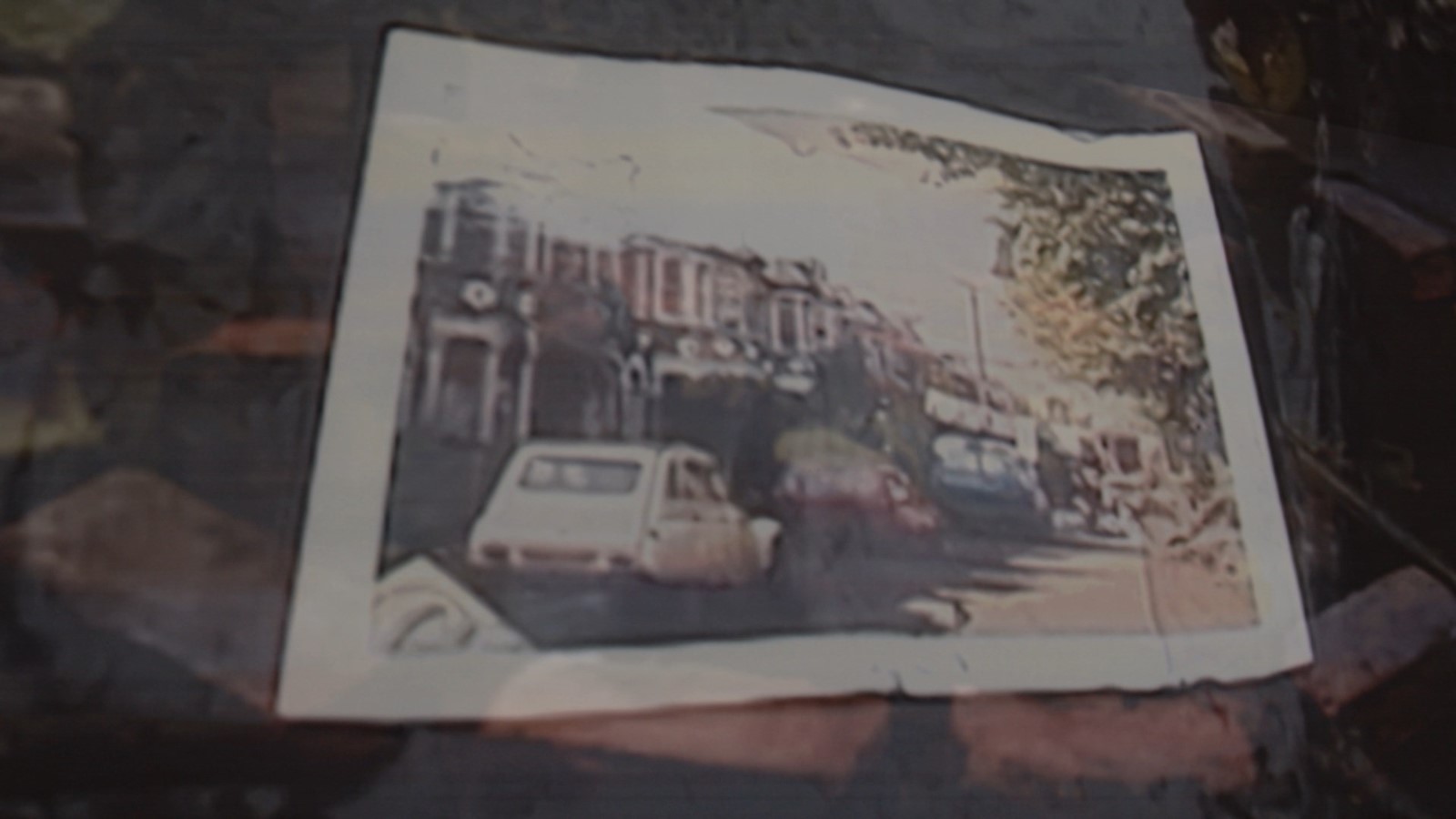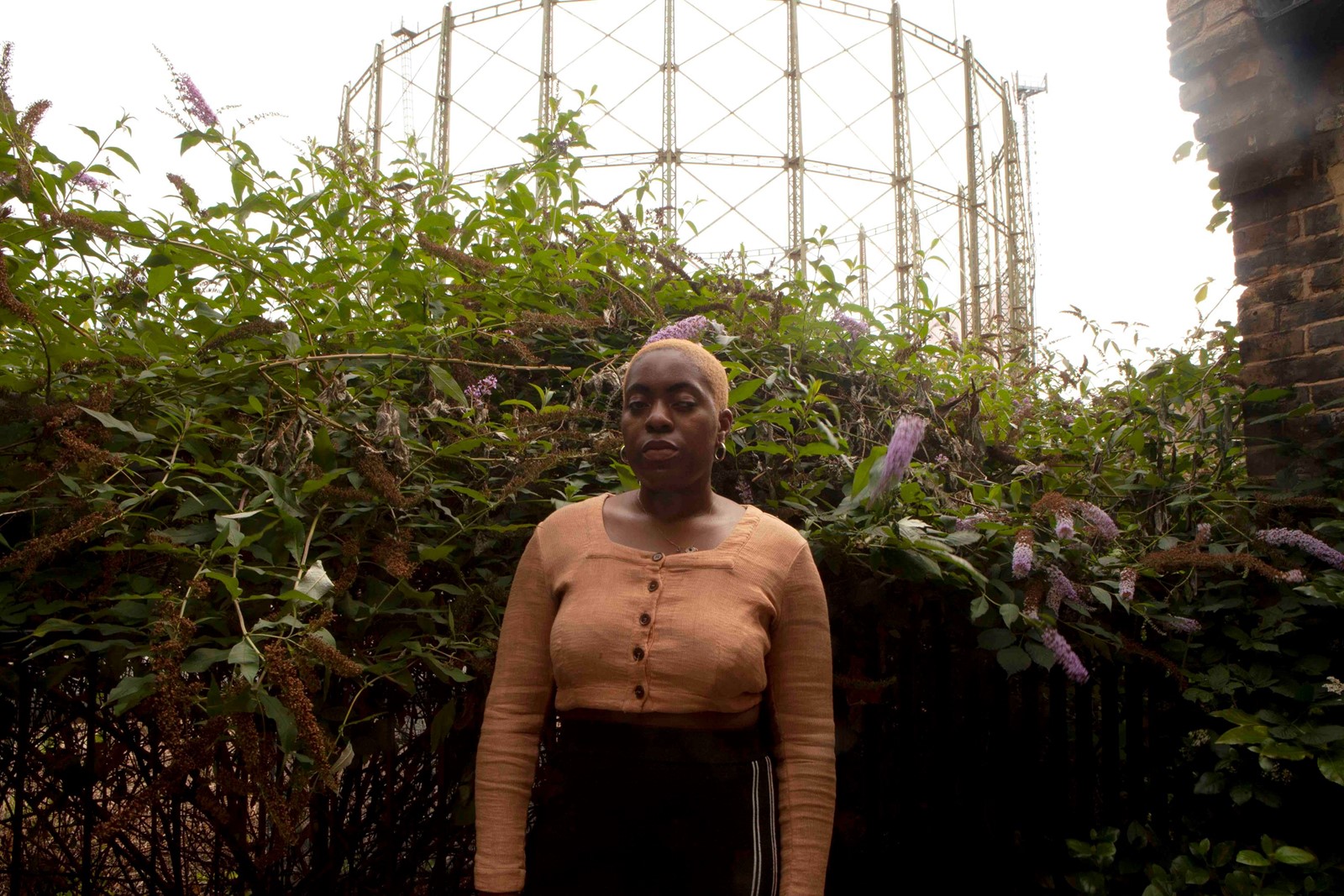Art In Relation: how can art allow human beings to live together sustainably and in relation to one another? In this series, Chinese-Canadian curator and writer Kate Wong speaks to artists working across performance and film about the role of storytelling in their practices, and about creating work that allows us to come together in a world that tries its very best to keep us apart.
Working between cinema and installation, artist and researcher Onyeka Igwe’s practice is, in her own words, animated by the question: “How do we live together?” For this reason, she was the first artist who sprang to mind when developing this series of conversations.
Across recent projects including 8 yams, 8 small yams, 8 eggs, a cow and a cockerel – an installation and dinner that took place at Forma (London) in 2021, and that will be restaged as a screening and meal at beursschouwburg (Brussels) next month – Igwe employs her research into social histories and geographies as a foundation for thinking about how we live now, and how we might live in the future. The resulting work is intricate and poetic, comprising multiple strands that come together as visual, sonic and spatial engagements.
The Miracle on George Green paints a picture of the protests and collective resistance towards the building of the M11 link road in Hackney in the mid-1990s. Born out of Igwe’s recurring walks through Hackney Marshes in 2020, the work tracks parallel English histories in relation to the artist’s childhood memories. Screening at High Line in New York until July 6 as part of the High Line Channel series, the film draws upon Igwe’s interest in the English Civil War, and in particular, her interest in The Diggers and the True Levellers – a group of religious and political dissidents founded in 1649 who were united in their desire to farm on common land.
The Miracle on George Green begins by drawing attention to the 250-year-old sweet chestnut tree that grew in the middle of the green. The tree, which was due to be cut down to facilitate the M11 extension, became not only a catalyst for greater support against the link road, but also a powerful symbol of community resistance. As Igwe states towards the end of our conversation, “the commons is an imaginary”, and her film illustrates that a shared imaginary can be activated by something as simple as a chestnut tree.
Here, we discuss the complexities of English identity, archives, the commons and enclosures.

Kate Wong: Tell me about your exhibition at the High Line. How did it come about, and why did you decide to show The Miracle on George Green?
Onyeka Igwe: High Line Originals is a biannual moving image commission. I was nominated, submitted a proposal in 2021 and was then commissioned. So The Miracle on George Green was conceived specifically for the High Line – a site that attempts to create what I think they would describe as a quasi-commons space in New York City. Thinking through what that meant in relation to my own experiences of the city I grew up in made me think of George Green, and the protest communities from the anti-roads protests in my local area.
KW: Your film incorporates archival footage and audio that documents events of ‘the battle of George Green’, which was part of a larger protest against the M11 link road in east London – where you currently live, I believe – in the mid-1990s. Can you tell me how you first came about this event?
OI: I live in Hackney and have grown up in various places across east London, primarily Leyton. I don’t really know how I first came to know about the ‘No M11 Link Road’ campaign and George Green. I was around seven or eight when these events happened and I know that people in my school wrote letters to the treehouse.
Did I always remember these events in a hazy way, as if it was a local phenomenon that seeped into my memory, or did I learn about it later and then think it was something I experienced at the time? In the 2020 lockdown I was walking and cycling around Hackney Marshes, the Lee Valley area and the Greenway cycle routes and a lot of childhood memories resurfaced alongside a kind of nostalgia that concerned me – a romantic remembering of things I experienced or wish I’d experienced. I think the protests and evictions at George Green and other sites fall into this uncertain category.
In my adult life I’ve met lots of people that grew up in the area I did, but I didn’t know [them] when I was young – and we always come to talk about these anti-roads protests, so they do feel part of an important collective memory and that’s maybe all that matters.
KW: You’ve mentioned a deep and longstanding interest in the English Civil war, the Interregnum (1649 to 1660), the Diggers and the Levellers. Can you tell me more about your relationship to English history, and what the notion of Englishness means to you?
OI: Oof, Englishness is something I always remember feeling estranged from, something when I was a child I was fearful of enunciating. I don’t think I ever have called myself, or been called English without incident. It’s not something I have felt able to or desired to ascribe to myself. In that very clichéd London way, I am a very happy, comfortable and confident Londoner – that’s a description I can occupy, but of course I have been socialised in English culture. When I was coming to a political awareness, I learnt about the English Civil War at school and that left a strong impression on me. I remember learning about the proto-communinism of the Diggers and the radicality of defying the divine right of the monarchy. All the intricacies of religious observance fascinated me (the first Quakers quaked with religious fervour!). I can’t tell you exactly why, but I was really drawn to it. I even wrote pamphlets in the fashion of the 1647 Putney Debates to express my own political ideas and it really influenced what I went on to study. Politics and history commingled there, and I have consistently returned to these interests.
I was recently watching Manthia Diawara’s One World in Relation where [Édouard] Glissant talks about the freedom to be opaque to ourselves – and I guess the reasons behind this interest, impulse or attachment are opaque to me – but its origins are something I was thinking about in making The Miracle on George Green.

KW: The film contains parallel narratives and histories, and they are not always entirely decipherable. There are three voices, for example – each with a different accent – that recount a personal memory of theirs or someone else’s relationship to nature and to the commons. Can you tell me more about these stories? Where do they come from?
OI: The voices are made up of both personal memory and research. I spoke to a few different people about their experience of the ‘No M11 campaign’, Camp Woodland – a summer camp in upstate New York that was accused of indoctrinating kids into communism and had some famous former campers – and people working on the future of the commons in the UK today. So, the voices tell stories from these perspectives, my own memories, and are speculations.
KW: The Miracle on George Green makes me think of Marx’s idea of the great enclosure. How do you feel about fixity and transience? For me, as a child of the Chinese diaspora, these notions are complicated. What happens if a situation or setting is no longer hospitable – do you leave? Where do you go, and when you finally land, will you be welcomed?
OI: I kind of regret invoking the commons, because the response is always enclosure – a binary that persists, but to what end? Do we need one to have the other? I guess it also reminds me of other ways of thinking through this kind of divide; [Fred] Moten and [Stefano] Harney’s fort and surround, or [Sylvia] Wynter’s Novel and History, Plot and Plantation.
I dislike fixity, or am suspicious of claims of it. I think the pursuit of fixity may be dangerous. I feel that things are continually changing and in flux – that is how life has unfolded for me. Mobility is a core factor of my parents’ life, and even my own. I moved a lot when I was a child, moved because conditions were not hospitable or because some kind of aspirational improvement was sought. I have kept up with that churn and have never lived in one place more than a couple of years. The question of being welcomed feels beyond my control, but the ability to move I have also felt to be vital.
I primarily experienced this in myself, and I wanted to convey mobility as an expression of memory and selfhood – that all the voices and the non-place or multiple places of the commons are represented visually in the film. It’s funny though, if you ask me to close my eyes and paint an image of the commons without thinking it would be a large empty square of boundaried grass, which is pretty fixed, right?
“Englishness is something I always remember feeling estranged from, something when I was a child I was fearful of enunciating” – Onyeka Igwe
KW: Across your practice there is an importance placed upon archives. Is looking back an important part of storytelling in the present and for the future? If so, why?
OI: I am conflicted about the importance of archives in my practice. For the last few years I was making work primarily around British colonial archives and my last film, a so-called archive, was in some way a repudiation of my reverence for the archive. I was hoping to unlearn it and I honestly thought I was done with it. But for this, I couldn’t resist visiting a local museum and looking through loads of documents, images and clippings about these historical protests to accompany my memory of them.
Maybe I’m just kind of basic and I need to look to the past as a starting point; it helps me think or imagine. Or I am just endlessly curious about what could have possibly happened in the past. I think my practice is invested in asking what I consider a political question – ‘how do we live together?’ – and I think that question has been asked and answered many, many times already. Or maybe it’s something like the borders between the temporalities of past, present and future are porous, so it’s not a case of looking back at all!
KW: What aspects of the battle of George Green do you think are not only still relevant, but perhaps crucial to organising and resistance?
OI: The thing that gets me or excites me most about these protests is the community that was created around the protesting. People squatted [in] houses that were scheduled for demolition across Leyton, Leytonstone and Wanstead for around a year and they lived there together, establishing a way of living outside of the norm. No cars, street parties, collective living. The possibility of living out the life you desire, now, I think is powerful. That’s what lingers for me, but also these protests had an enduring legacy that had repercussions for the future of road-building projects in the UK in the 90s, and their influence also permeated into other campaigns as well as into the collective consciousness of people in areas of east London that potentially helped formed political perspectives for the future.

KW: Can you talk about the role of music and song in your films? What is the song that is sung in The Miracle on George Green?
OI: There are two songs in the film; it begins with one that is a riff on Sad Christmas Tree, written during the campaign against the demolition of the George Green chestnut tree. The final song that plays in the film is The Diggers’ Song about the occupation of St. George’s Hill in the 17th century. I found the first song in a zine commemorating the protests and the second is a traditional song in the English folk tradition. I was interested in how songs and the chorus are a tool of political formation. The feeling of singing together can be galvanising, and I was struck by how people can remember the lyrics and songs decades after they first sang them. During an interview, Samuel Delany sang me a song he learnt maybe 60 years previous at Camp Woodland. I felt like these songs were important if I was going to be able to convey an impression of how political identity and awareness can fom.
KW: What commons still exist within London today?
OI: For me, the commons is an imaginary; a term that I am not sure translates so well? I think its existence is at the foundation of lots of people’s minds when we attempt to make a community together that challenges the narrow norms of the mainstream.
As I answer these questions in New York, I am on my phone keeping up with friends and organisers trying to resist an immigration raid on the streets of Hackney. [It] feels cheesy to say, but that’s what I think of as the commons.
KW And lastly, is there a way for us to live together in the world truly in relation with one another?
OI: I think about this a lot. I used to think that maybe being able to truly understand how each other felt – like a more intense form of empathy that disappeared the barriers we can put up – would be the key to this. Then Sense8 came out and stole my idea, but I am not so sure anymore. Thinking back to Glissant’s ideas about opacity and how he advocates for a freedom to be opaque to both ourselves and each other and [how] that allows us to be in relation. I’m gonna borrow from that and maybe say that living together in relation is about living with complexity and multiplicity without power [being] hierarchically stratified. Again, I feel kind of bashful saying that for others to read. I am constantly qualifying my utopian imagnations!
The Miracle on George Green is playing daily at 8pm at the High Line in New York until 6 July 2022.
